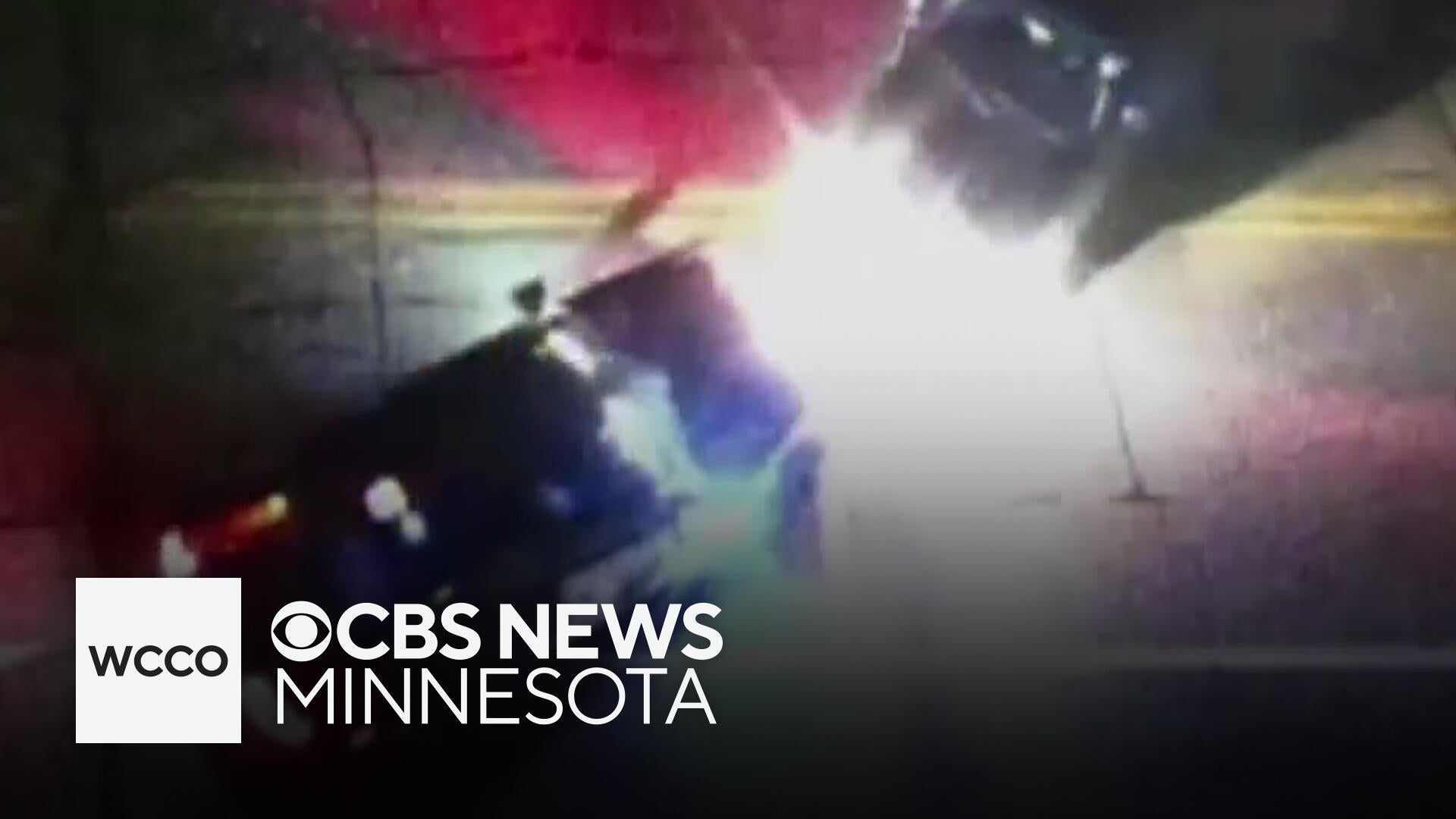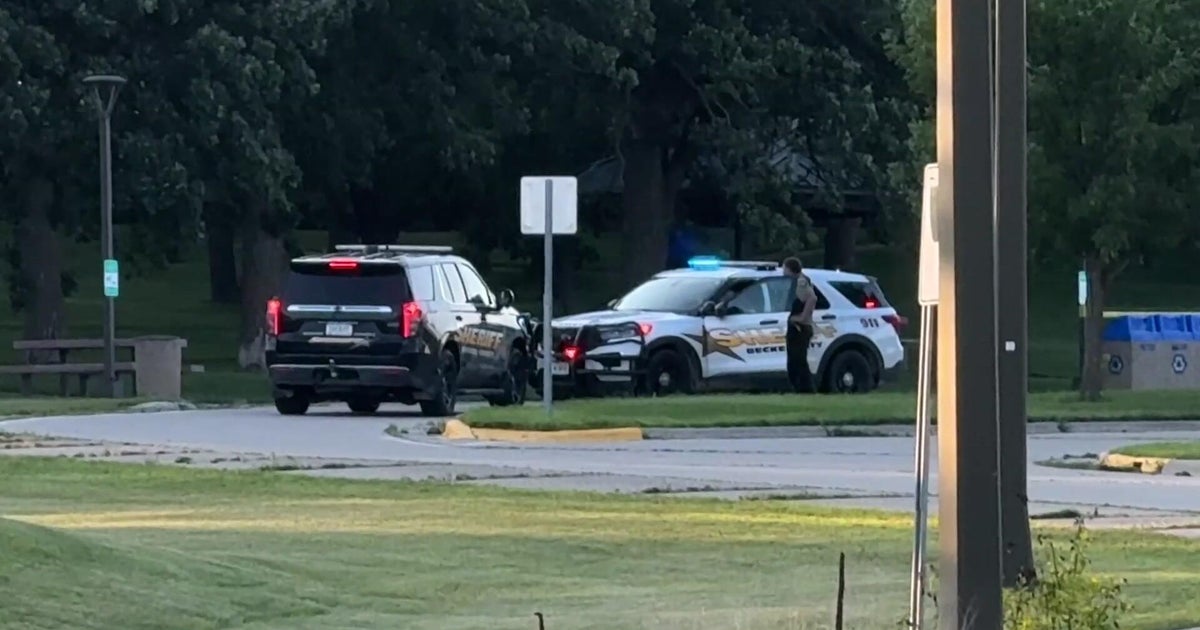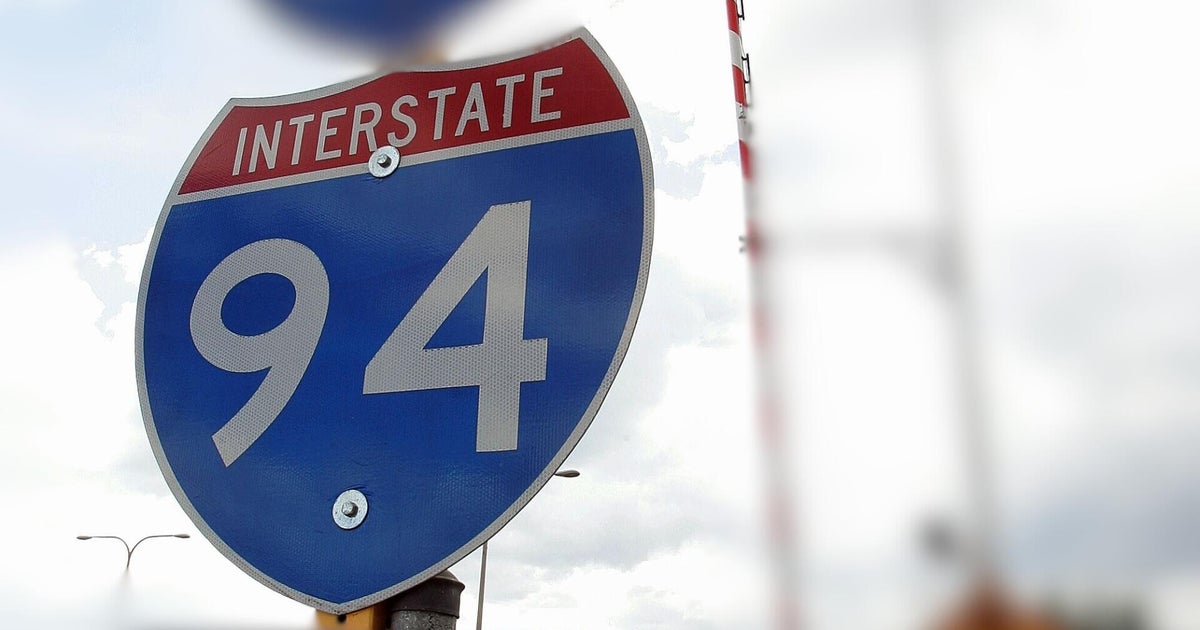"It's a balancing act": Minnesota police manage chases while protecting drivers
WCCO Investigates is looking at safety on the roads after a recent high-speed chase through the streets of Ramsey County.
Deputies reported on Saturday that a 32-year-old Brooklyn Center man driving a pick-up truck fled deputies during a traffic stop near the Hugo-Forest Lake border. The driver was clocked at speeds exceeding 100 mph, with Ramsey County deputies joining the chase on southbound Interstate 35E.
Deputies released stop strips, but dashcam footage shows the suspect didn't stop or even slow down as the truck left behind a trail of sparks. The driver eventually lost control, hit a guardrail and rolled to a stop in the ditch near Interstate 694 and Snelling Avenue in Roseville.
He was taken into custody, as well as his passenger, a North Branch woman, 27, who had outstanding warrants in Ramsey County, the sheriff's office said.
Authorities also say a gunshot was heard near I-35E and Highway 96 during the chase, and a handgun was later spotted on the interstate in the area and recovered.
"[A deputy] photographed it and recovered it — meaning more charges could be coming, just as fast as that truck and sparks were flying," the sheriff's office wrote in a Facebook post.
How and when officers decide to start a chase
There is no one-size-fits-all police on chases in Minnesota; each agency has its own rules of engagement when it comes to pursuits.
Those protocols, however, are based on a model from the Minnesota Board of Peace Officers Standards and Training (POST), . One provision states that an officer can start a pursuit when the risk of letting the suspect go outweighs the risk to other drivers on the road.
The officer or trooper behind the wheel must also keep evaluating those risks and decide whether there's still a good chance of even catching the person they're after.
"It's a balancing act, right? As law enforcement officers, we all have a duty to uphold the law, but we also have a duty in the mission of traffic safety," Captain Brian Cheney with the Minnesota Highway Patrol explained to WCCO Investigates. "Is it a controlled access roadway where there are no cross-streets and intersections? Is there less risk as opposed to a freeway in the Twin Cities, where they exit off a ramp and the first thing you come to is a busy intersection?"
Across the state, police have engaged in 7,044 pursuits over the last three years, according to data from the Bureau of Criminal Apprehension that was analyzed by WCCO Investigates. The top reasons for pursuits included traffic violations (56.7%), stolen vehicle (13.6%), felony (6.4%), warrant (4.2%) and DUI (4.1%).
The vast majority of chases (70%) took place between 6 p.m. and 6 a.m., and nearly 90% of them lasted less than 10 minutes, while more than half of all pursuits in the last three years (54%) ended without an arrest of the driver.
"Our complete mission is traffic safety," Cheney added. "When we really look at travel safety, that has to play into it."
Data shows that 98.5% of all pursuits end without injury, but nearly a third result in some property damage, most often to the violator's car.
"There is no pursuit if the person doesn't flee," Cheney quipped. "I go back to just a traffic stop. Pull over. You might get a ticket. Go on about your day just as you were before."
How officers train to safely end pursuits
All first responders must pass advanced driving courses for their certifications, but some police and sheriff cadets train in what's called the PIT maneuver, which involves making contact with the suspect's vehicle at a particular point to spin them out.
WCCO was given special access to PIT training at The Precision Driving Center of Minnesota at St. Cloud State University.
"We are not hitting vehicles out of the way. We are pushing vehicles out of the way," instructor Greg Newinski explained to WCCO Investigates. "We are pushing the back end of the vehicle to break it loose, spin it around, disable it so the person can be apprehended."
A pursuit intervention technique, or PIT, can actually refer to any number of strategies to end a pursuit, including spike strips or roadblocks, but state data shows troopers choose to perform the PIT maneuver more than any other technique in a chase.
"We're making contact with the car in a very soft way," Newinski insisted. "You need to have the training to do it safely. You can't just go and do this."
The training includes two hours in the classroom and then six hours on the range, and while it's not exactly rocket science, there are physics involved. Newinski cautioned that the most challenging skill, however, is the ability to think critically and stay calm.
"It's building that muscle memory of what to do," he said. "All our lives we're told not to make contact with other vehicles and now we're telling you to make contact with another vehicle."
All police officers and sheriff's deputies must complete an advanced driving skills refresh every five years to keep their peace officer license active. Those with PIT certification will also do that with their refresher course."





